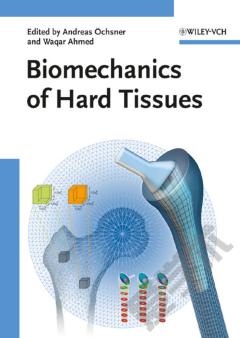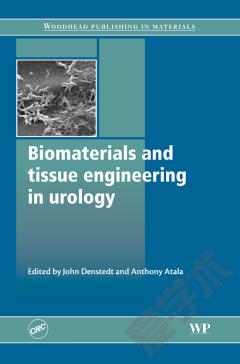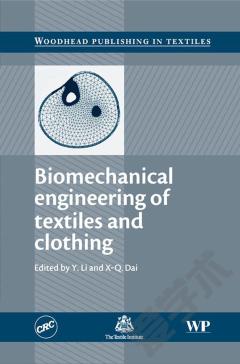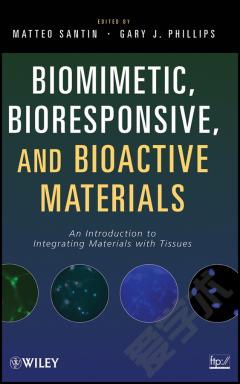Biomechanics of Hard Tissues —— Modeling, Testing, and Materials
----- 硬组织的生物力学:建模、测试与材料
1 BONE AND CARTILAGE, ITS STRUCTURE AND PHYSICAL PROPERTIES Introduction: Growth Conditions, Matter Geometry and Packing, Collagen, Mechanical and Electrochemical Behavior of Porous Matter and Tissues Cartilage Matrix and Types Cartilage Growth and Development: Fetal Development, Mineralization, Growth and Repair, Diseases Regulation of Cartilage Activity and Streaming Potentials in Cartilage Bones as Organs and Tissues: Functions and Types of Bones Structure of Bone: Compact and Trabecular Tissues, Osteons and Cells, Inorganic and Organic Matrix Parts Marrow, Endosteum and Periosteum, Nerves, Blood Vessels and Cartilage Remodeling and its Purposes Bone as a Composite and its Mechanics Bone as a Capillary Porous System Diseases of Bone Bioengineering: Growing Artificial Cartilage and Bone 2 CONSTITUTIVE MODELLING OF THE MECHANICAL BEHAVIOR OF TRABECULAR BONE: CONTINUUM MECHANICAL APPROACHES Introduction Continuum Mechanics Experimental Testing and Material Properties Structure and Idealization Modelling of Mechanical Behavior 3 NUMERICAL SIMULATION OF BONE REMODELING PROCESS CONSIDERING INTERFACE TISSUE DIFFERENTIATION IN TOTAL HIP REPLACEMENTS Introduction Bone Remodeling and Interface Models Bone Remodeling Based on Optimality Conditions Interface Behavior and Adaptation Formulation for Simultaneous Bone Remodeling and Interface Adaptation Finite Element Models and Algorithm Numerical Results Discussion and Concluding Remarks 4 BONE AS A COMPOSITE MATERIAL: NATURAL BONE AND BIOMIMETICS Introduction Phases and Volume Fractions Individual Phase Mechanical Properties Introduction to Composite Mechanics Bone as a Composite: Macro-scale Bone as a Composite: Micro-scale Anisotropy Implications Conclusions 5 MECHANOBIOLOGICAL MODELS FOR BONE TISSUE. APPLICATIONS TO IMPLANT DESIGN Introduction Biological and Mechanobiological Factors in Bone Remodelling and Bone Fracture Healing Phenomenological Models of Bone Remodeling Mechanistic Models of Bone Remodeling Examples of Application of Bone Remodeling Models to Implant Design Models of Tissue Differentiation. Application to Bone Fracture Healing Mechanistic Models of Bone Fracture Healing Modelling the Influence of Some Mechanical Factors in the Course of Bone Fracture Healing Concluding Remarks References 6 BIOMECHANICAL TESTS FOR ORTHOPAEDIC IMPLANTS TRIBOLOGICAL ISSUES & SIMULATION CONDITIONS Tribological Testing for Orthopaedic Implants: Kinematic and Lubricating Condition, Oxygen Concentration Experimental Analysis for Orthopaedic Implants Finite Element Method Analysis for Orthopaedic Implants 7 SCAFFOLD-BASED BONE REGENERATION Tissue Scaffolds and Their Role in Tissue Regeneration Regenerative Properties of the Body: Processes in Bone Regeneration, Limitations Design Considerations for a Tissue Scaffold: Materials, Architecture, Vascularization, Heterogeneous Approaches Design Methodologies: Outer Geometry, Statistics-, Voroni- and Unit-Cell-Based Design Scaffold Fabrication: Freeze-Drying, Salt Leaching, 3D Fabrication Scaffold Behavior During Regeneration 8 MECHANICAL AND MAGNETIC STIMULATION ON CELLS FOR BONE REGENERATION Introduction Effects of Stimulation on Cells Mechanical Stimulations on Cells Magnetic Stimulations Other Stimulations and Future Developments Conclusion 9 JOINT REPLACEMENT IMPLANTS Introduction Design of Joint Replacement Implants: Regulations, Requirements, Concept and Detail Design, Preclinical and Clinical Testing Joint Replacement Implants for Weight-bearing Joints: Hip, Knee, Ankle Materials and Fixation Methods Joint Replacement Implants for Joints of the Hand: Fingers, Wrist Materials and Fixation Methods 10 INTERSTITIAL FLUID MOVEMENT IN CORTICAL BONE TISSUE Introduction Bone Interfaces, Porosities and Fluids The Vascular Structures of Bone The Vascular Porosity The Lacunar Canalicular Porosity The Poroelastic Model for Cortical Bone Electrokinetic Effects in Bone Interchange of Interstitial Fluid between the Vascular and Lacunar Canalicular Porosities 11 BONE IMPLANT DESIGN USING OPTIMIZATION METHODS Introduction Optimization
{{comment.content}}








 京公网安备 11010802027623号
京公网安备 11010802027623号